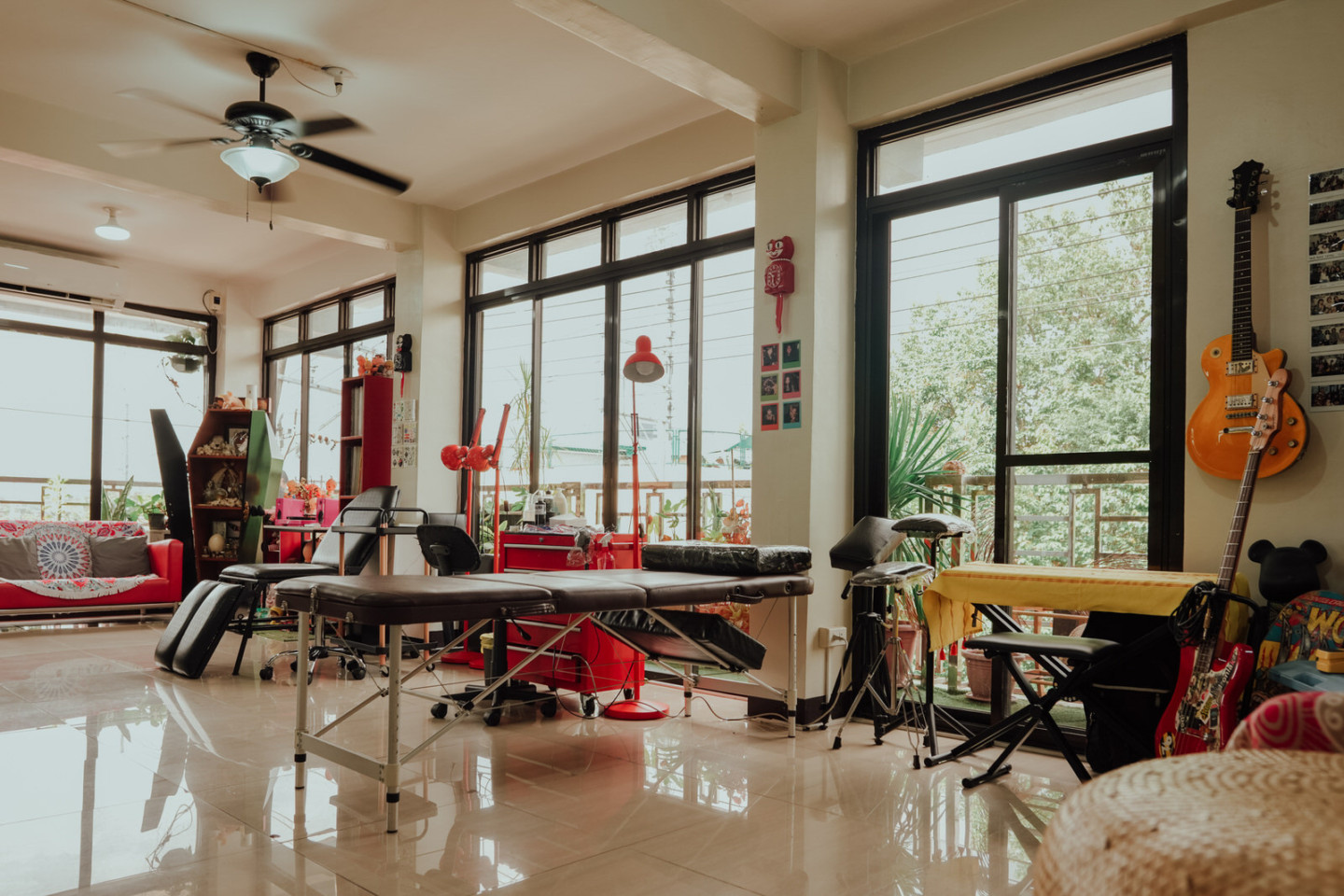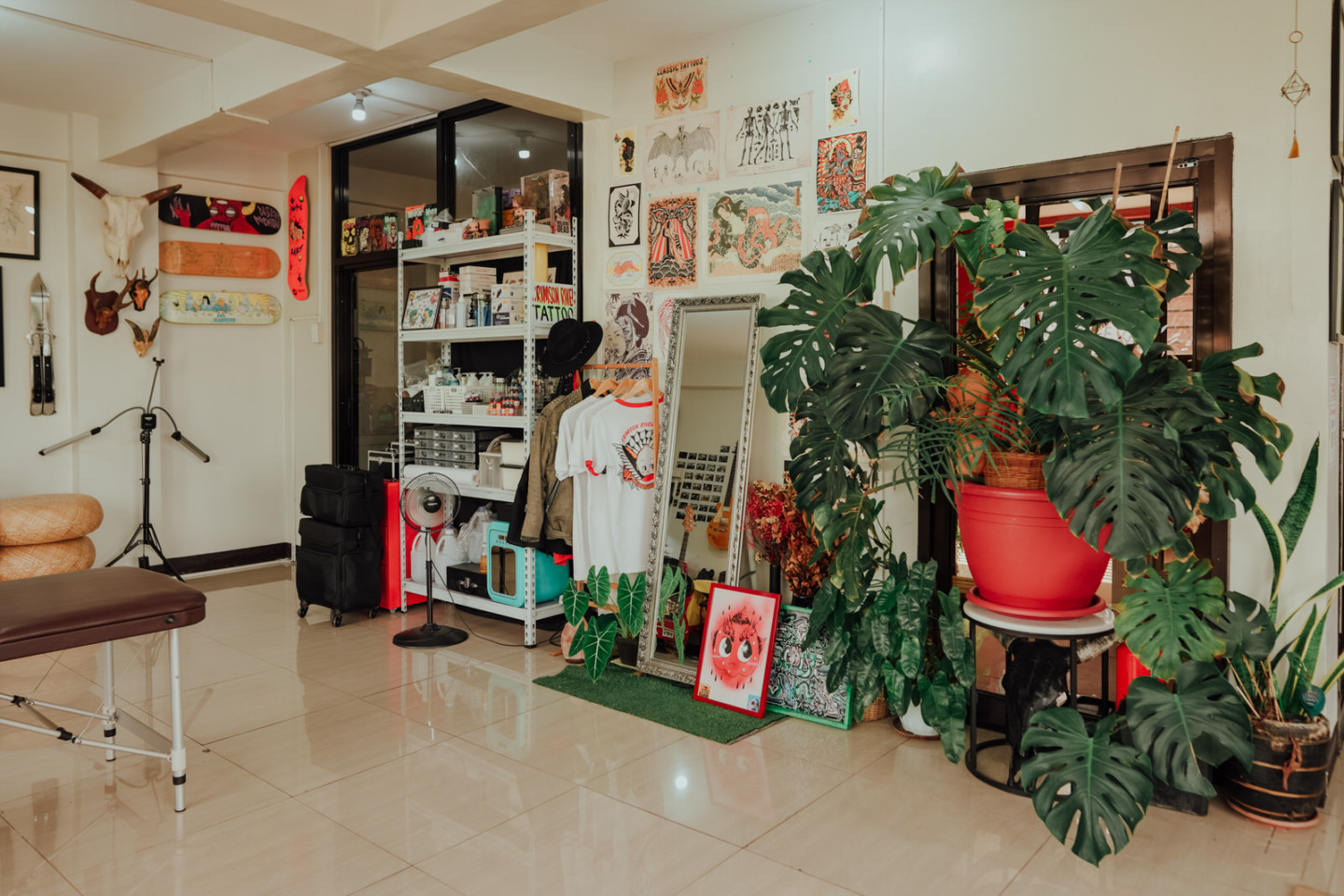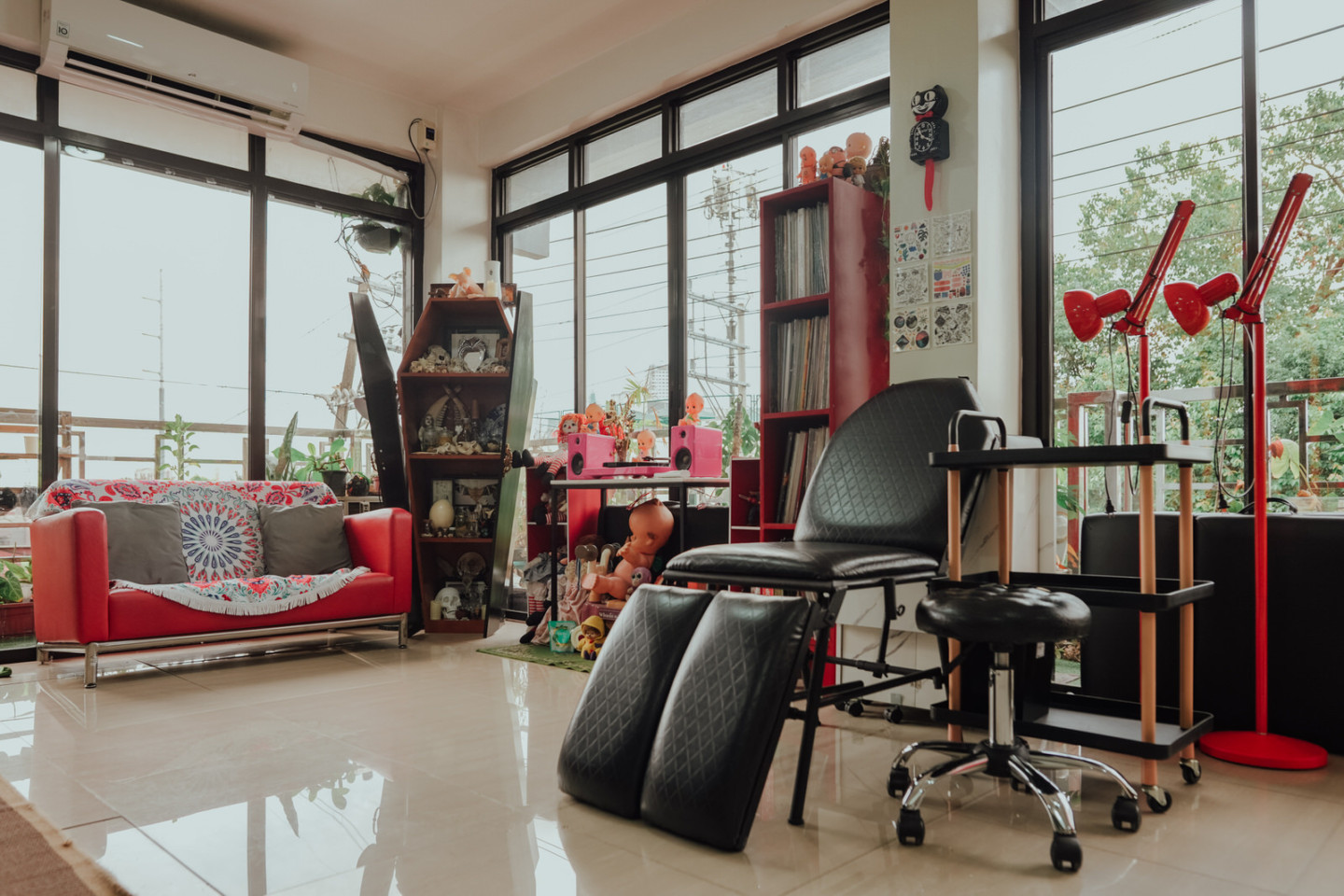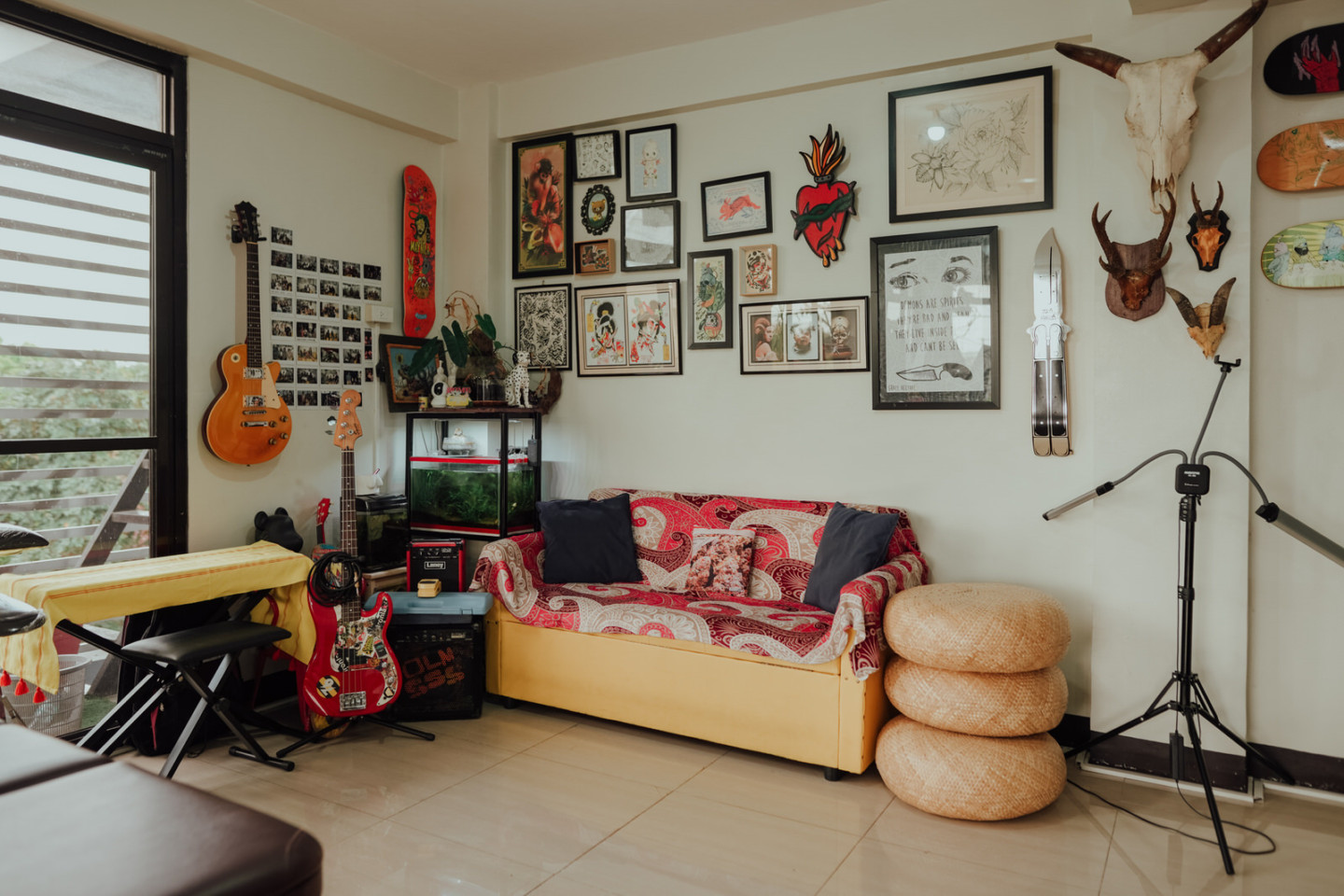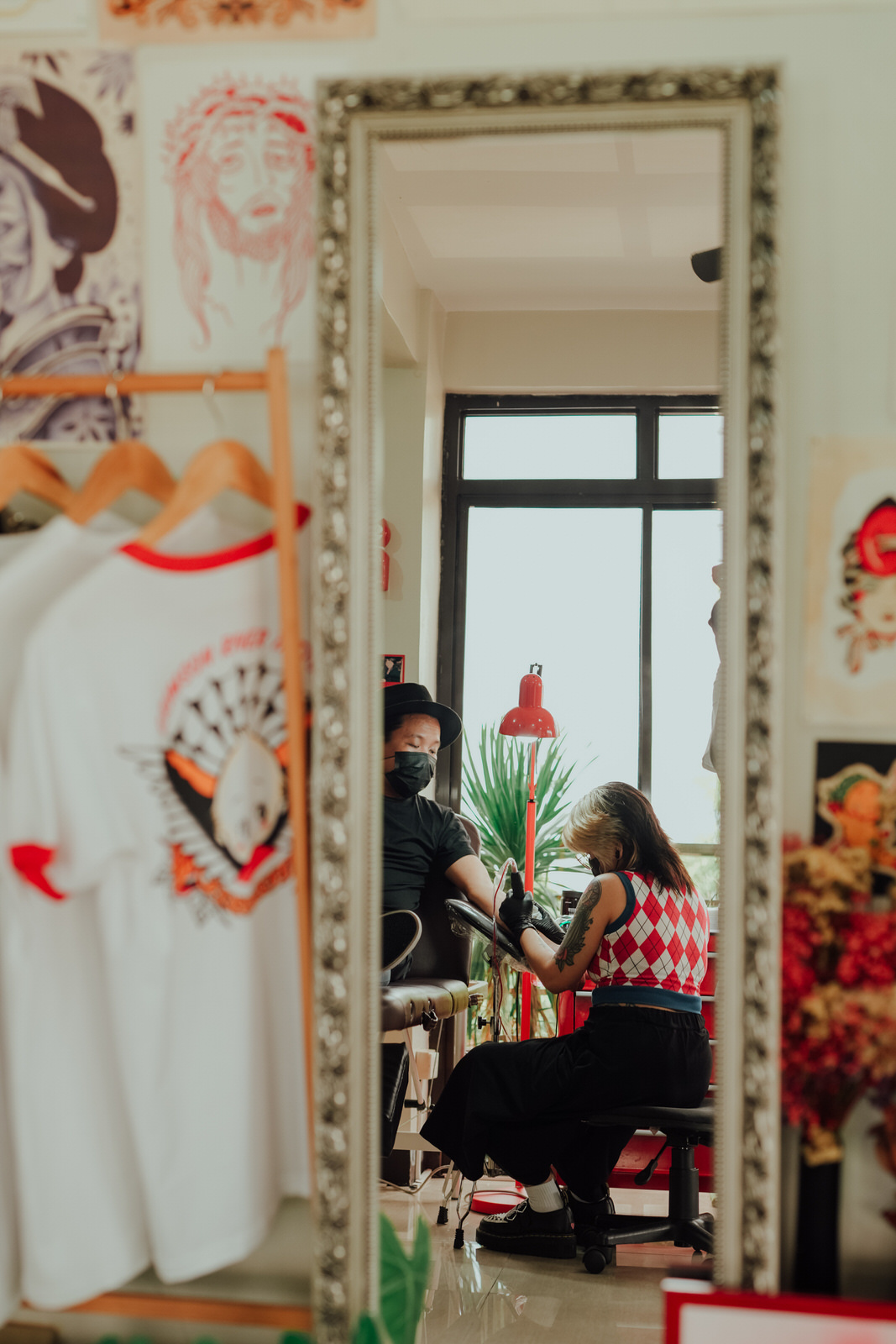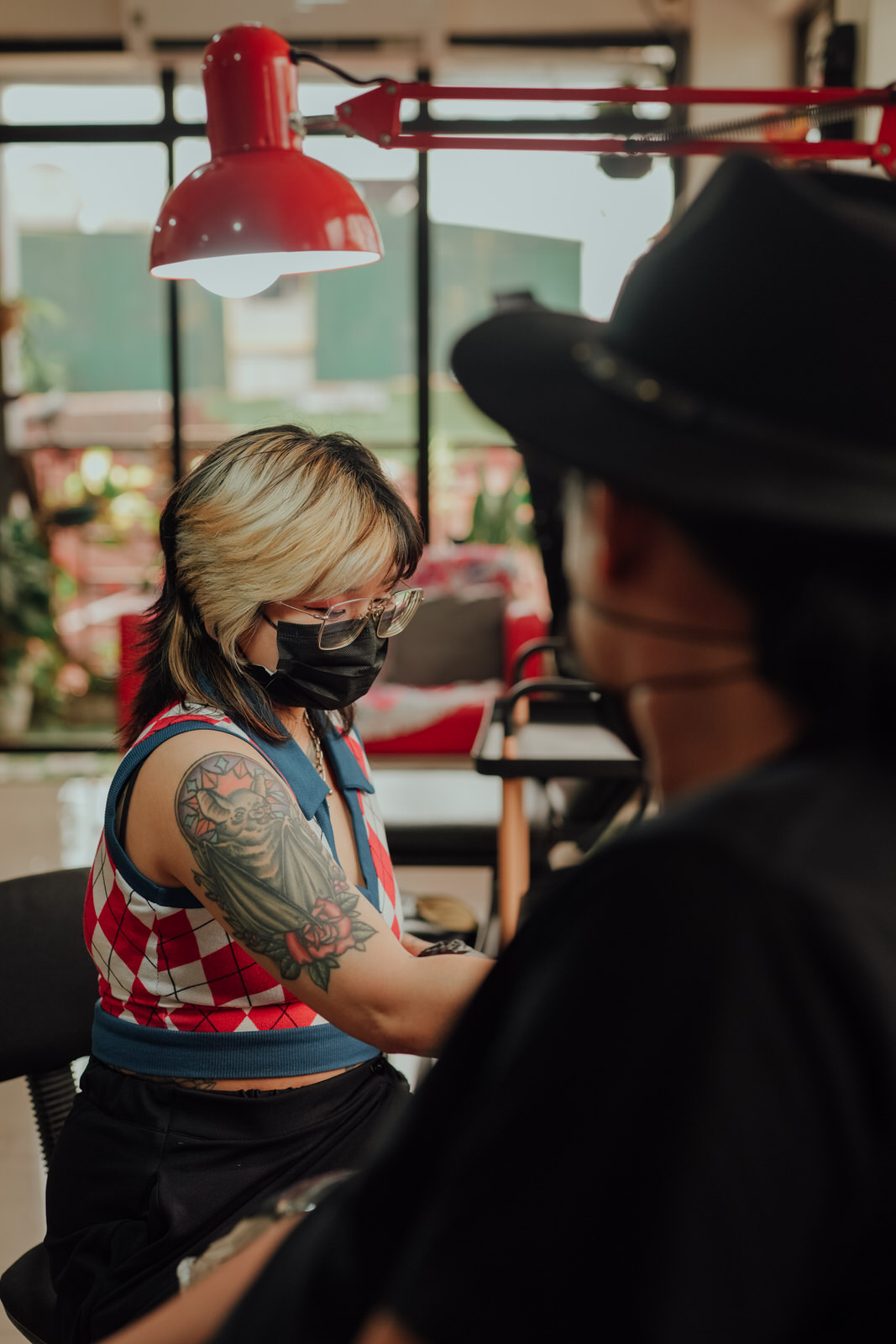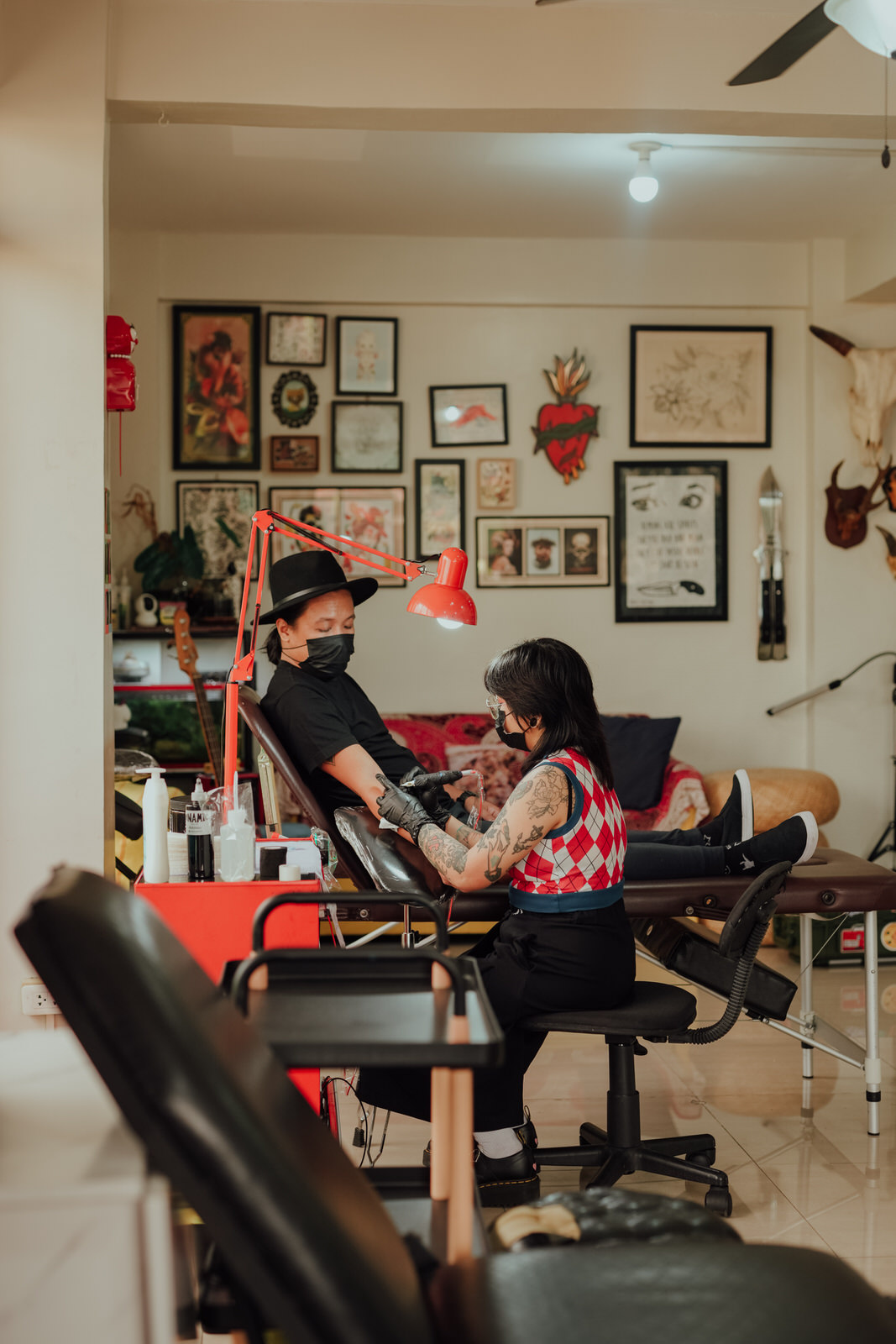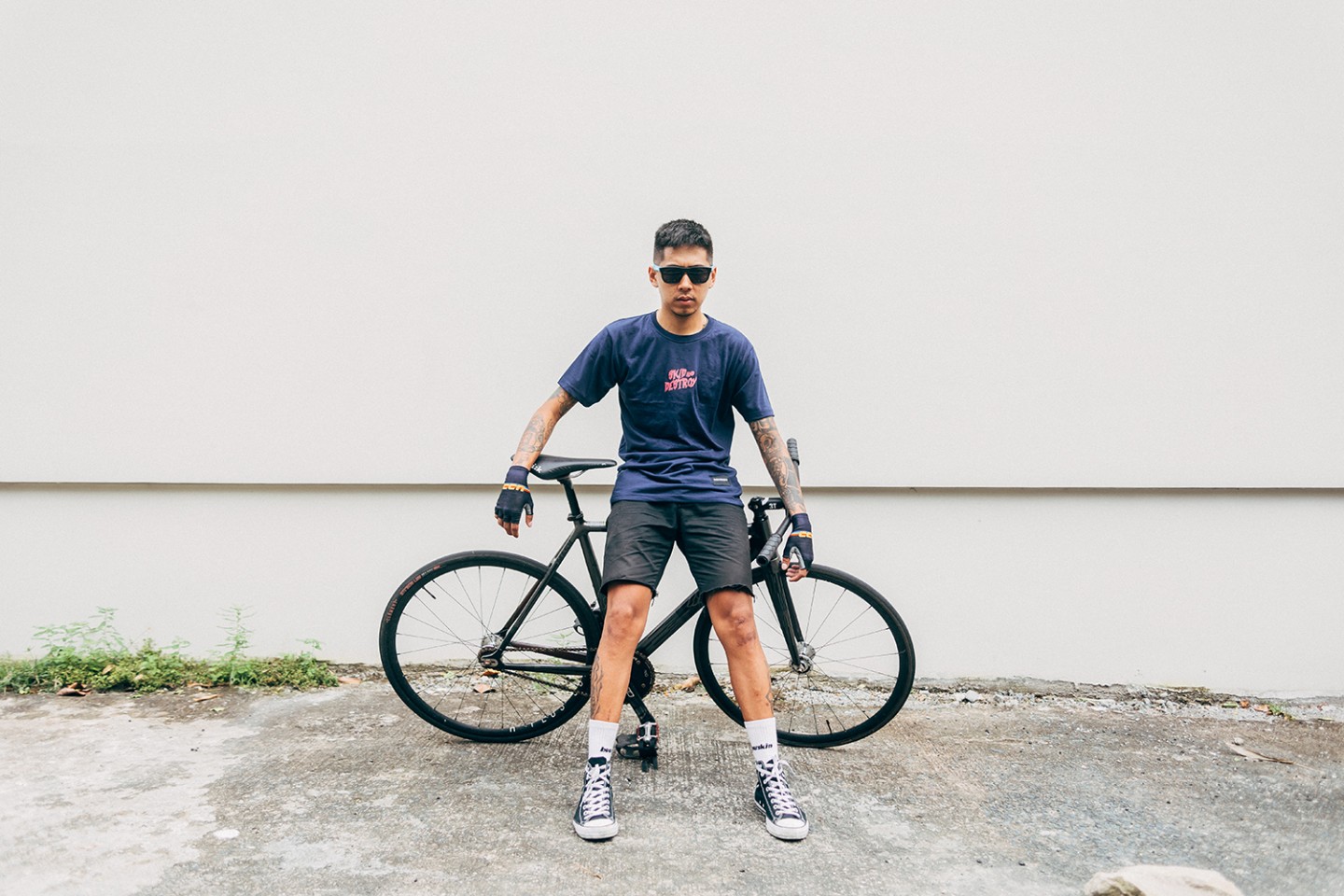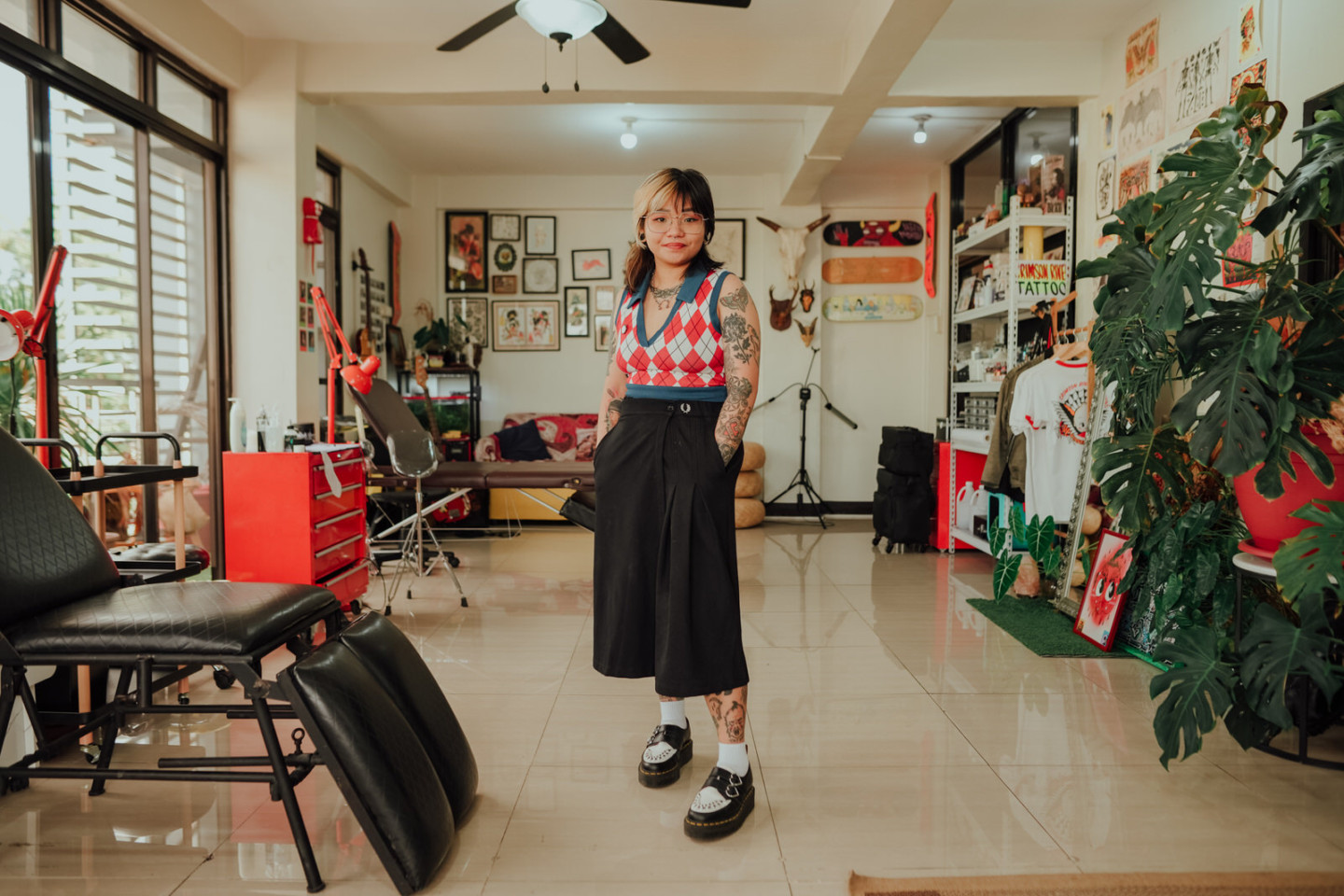
Tattoos occupy an ambivalent partition in our collective consciousness. From culture to culture and across the spectrum of religious sensibilities, our fingers point every which way at the innumerable meanings, projects of beautification, affiliation, and artistic experimentation that tattoos encompass. In the same wrist-action a moral maxim is applied: the onlooker either praises the permanent art or condemns it.
But we have entered a grey-area era.
Two people on other sides of the world can access the same material on the internet and recognize two different things. Truth is blurred; traditions are questioned.
Gigie Santiago—commonly known as gigiebear—tattoo artist and founder of Crimson River Tattoo in Quezon City, is a practitioner working through this tussle of change. “The social perception of tattoos has greatly improved over the last ten years,” she says. “It has become more accepted in different lines of work [as] people have proven that [having] tattoos doesn’t affect workmanship.”
Photographer — Zaldine Alvaro
First ink piece
In high school, around the time thoughts of the rest of my life begin to sprout, Gigie was playing bass for the Rainbow Tables, the namesake of her and her friends’ hangout haunt. “I didn’t really have a particular thing that I wanted to do,” she reflects, “but I was pretty sure I enjoyed music and art very much.” Though the seed that was the Rainbow Tables resulted to dormancy, Gigie’s artistic energy was only beginning to bear fruit.
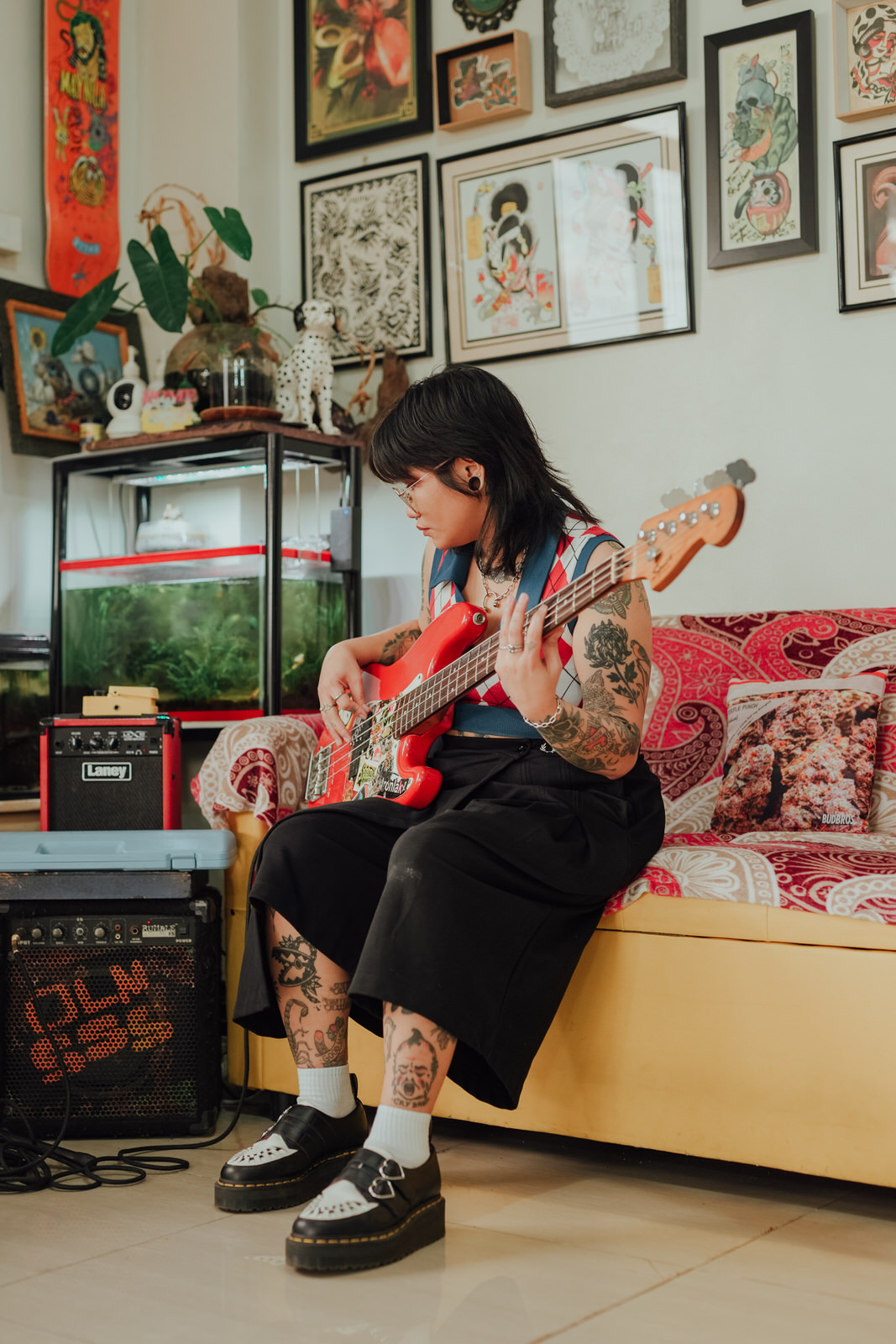
“I took up fine arts with a focus on advertising in college and that’s where I met my friends Minnie and Ryan Calleja from Goodhand Tattoo,” says Gigie. While an interest in tattoos had always rested in Gigie, the idea of getting one hadn’t been seriously assessed then. The fact that Gigie’s parents, both accountants, were strict added a “con” to the unformed assessment diagram.
But as things go in our ventures at 18 and onwards, Gigie tossed the diagram and got her first ink piece. “I finally got tattooed by Ryan when I turned 18 as a gift for myself,” Gigie shares. “It was a traditional sparrow bird with a banner that [had] a bible verse on it. I had to compromise in case my parents [got] angry.”
A guide to beginning the tussle
While most of us remain on the side of the artform limited to appreciation, Gigie made the move to application after her partner, Cyrus Navasca, was gifted a tattoo kit by a friend who was leaving the country. “Our friend Kim was leaving the Philippines and wanted us to have his supplies because he knew Cyrus got an apprenticeship,” Gigie shares. “That’s really just how it started.”
Traditionally, the journey into the tussle begins with an apprenticeship. A budding artist is taken under the wing of an established tattoo artist or shop and is nurtured within the framework of their chosen tattooing style – if they’ve already managed to find that. Gigie reflects on the first steps, “It’s still best to learn from someone who can teach you all the important stuff that is behind getting the needle on the skin. Setting up a sterile station, drawing your own designs, respecting the craft, and knowing how to deal with clients are also very significant and can’t be learned overnight.”
However, Gigie didn’t begin on the traditional road, but began planting her seeds in the industry within her circle of friends. “Cyrus taught me the basics, and I was blessed with supportive friends who were game to be practiced on,” she shares. After a year, Gigie was taken under wing. “55tinta invited me. [I] learned a lot, especially from Jhay Colis since [we were] always together in the shop when I started.”
This move wasn’t celebrated across the board. “My parents didn’t think it was a ‘real job’ because I wasn’t in an office,” Gigie shares, “but they saw that I was really happy, and I was earning enough to pay my bills.” Following a period tattooing out of a home studio, Gigie decided to set up shop in a commercial space in 2018, founding Crimson River – a title bearing the names of her two children. “I was tattooing alone in a big space for a couple of months,” shares Gigie. “But then I invited my friends to work with me since a lot of them had no choice but to stop working for safety reasons and because they were working [in] their home studios.”
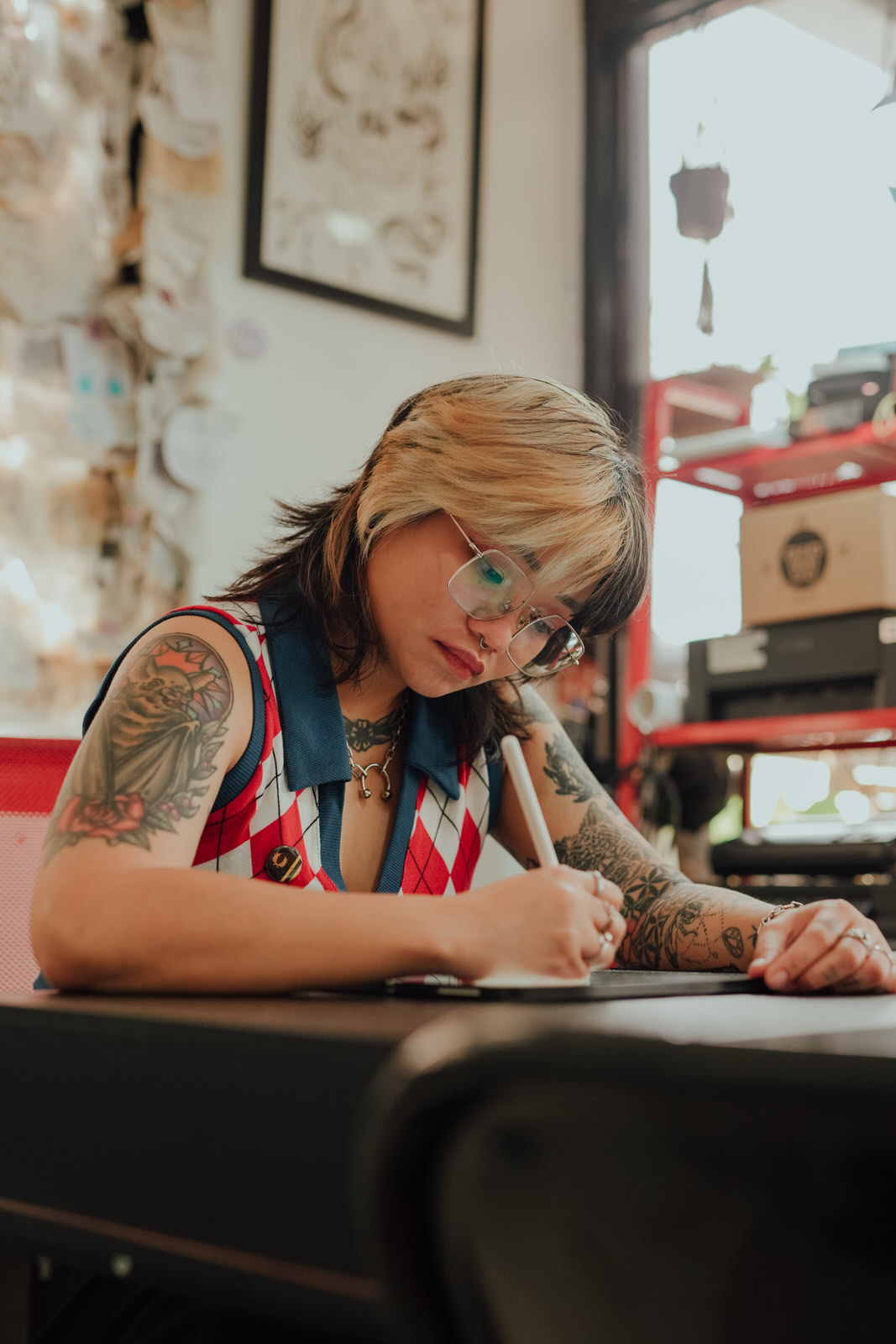
Crimson River now, in its far from minimalist, black, red, gothic, plant, book, poster, and actual skull studded space, houses an all-woman team comprising six tattoo artists, a nail artist, and a piercer. “Hopefully when this pandemic calms down, we can maybe house more creative people and accept more people who want to get tattooed,” Gigie shares. “We support all artists that provide services, so we don’t close the studio to tattoo artists [only]. We are just really happy to share our space and make art with friends.”
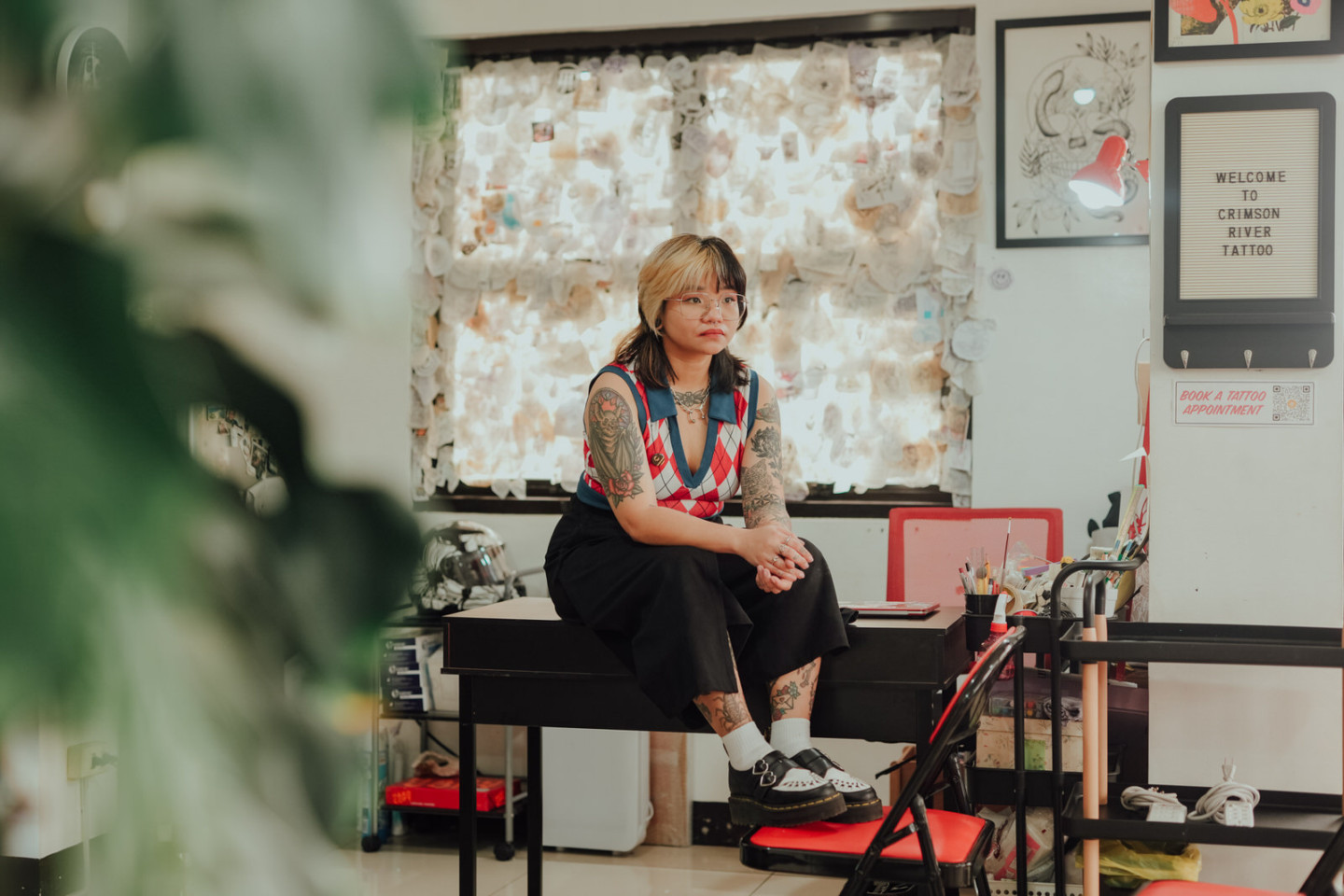
Social perceptions and the heart and soul of tattoos
Archaeological evidence provides that tattoos have adorned bodies as signals of political affiliation, power, coming of age, and an unending list. Nowadays, the signals aren’t clear-cut. Social conventions as manifested in workplaces, in media, and within families, provide material for debate on the sort of values getting tattoo signals.
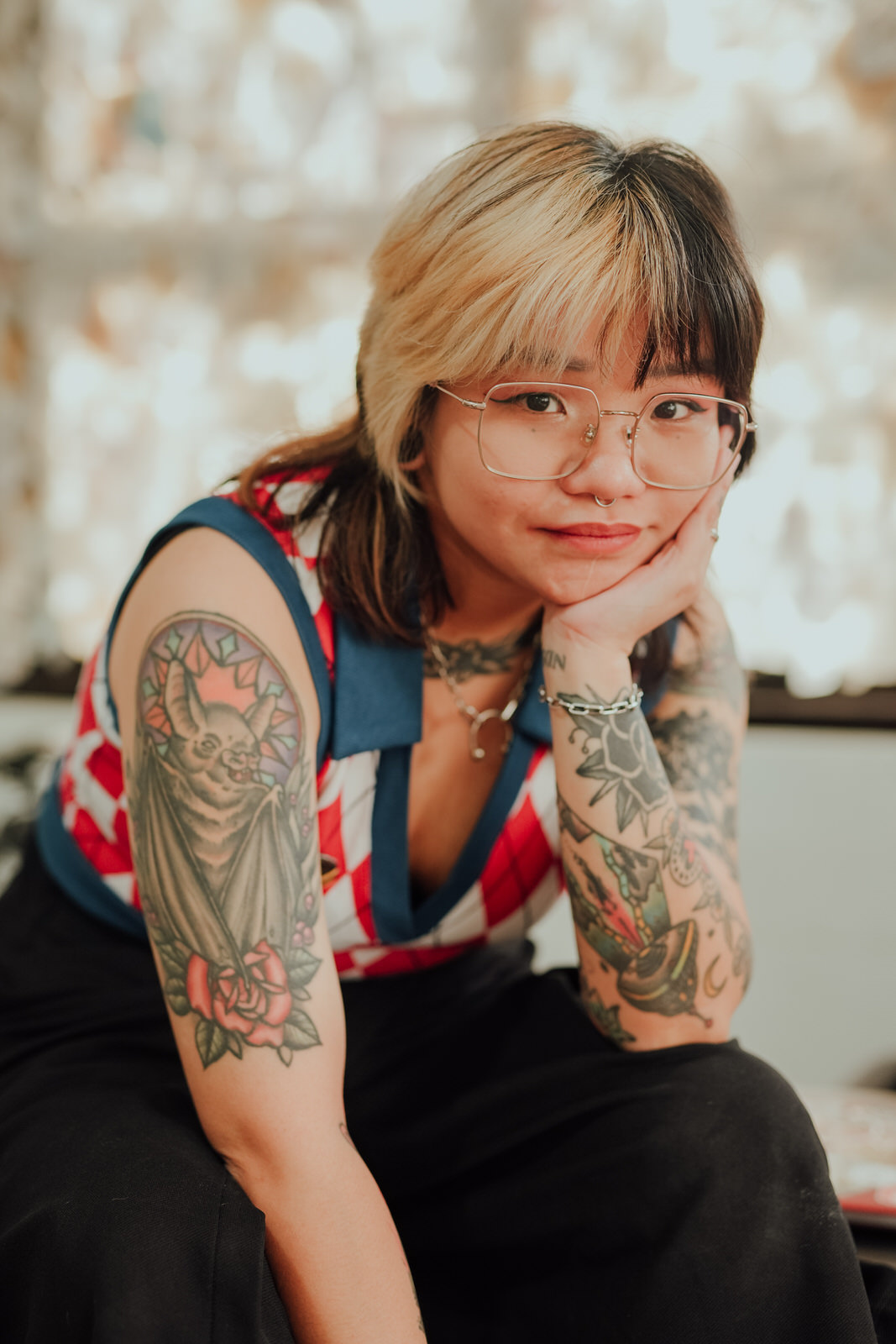
“I think the social perception [of] tattoos has greatly improved over the last ten years,” Gigie shares. “[They have] become more accepted in different lines of work.” The limitless access to information, specifically relevant for topics as niche as the history of tattooing, have raised public awareness on tattoos out of their existence in gang affiliations and upwards into their historical and sacred applications. In the same spirit of our grey-area era, tattoos have also been ushered into a space for individual expression – where rather than affiliating, the tattooed seeks to individualize.
According to Gigie, the main styles of tattooing are the genres American traditional, Japanese, black and grey, tribal, and realism. And while she has tried her hand at all these styles through her work in a street shop, Gigie has made efforts to streamline the work she does – zooming in on her tattooing style of choice.
“I don’t actually know how to label my style,” she shares, “but I generally work on illustrative blackwork tattoos. I usually draw inspiration from vintage science illustrations if it’s for personal work, but I also really enjoy most of my clients’ ideas.”
The age of the average client sits in a large range. “We’ve had clients who just turned 18 as well as seniors who think it’s not too late to get one,” Gigie says. As much as many of Gigie’s clients get tattoos to commemorate an event or honor a memory, many also seek the ink “just because.” There is a whole genre that lauds the tattoos of the “just because” sort. Let’s call them “stupid tattoos.” “[By] stupid tattoos, I mean fun and witty-stupid,” Gigie clarifies. “I think these became popular along with the rise of social media.”
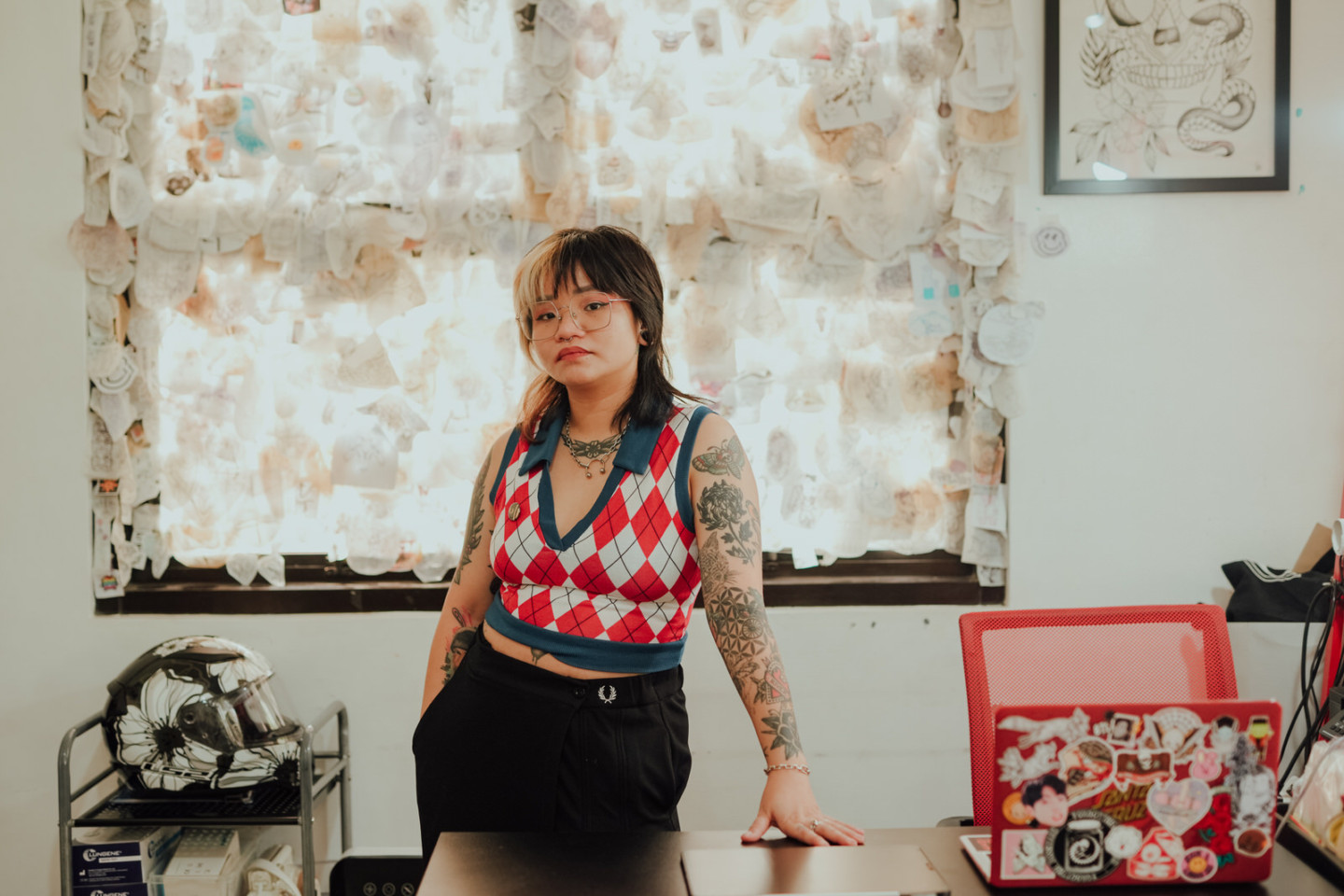
Social media has become a tool by which artists can share their portfolios and through which clients can browse their next adornments – not just for the sake of cementing a memory or motif, but in the name of expression and accessorizing. It’s possible that the readily available artist portfolios have contributed to the shrinking size of the average tattoo. “I think getting small or hand-sized tattoos [is] more popular now than ten years ago when getting bigger pieces was the trend,” Gigie observes. “More people are collecting tattoos from different artists, so they tend to reserve space on their skin.”
Tradition shines through the grey
While we sit in our grey area, allowing our reasons for marking our skin to stew in as much meaning as we want it to, a spring of gratitude wells up. We live in a time that provides larger partitions for us to express, memorialize, and accessorize whilst not tarnishing our perceived credibility and capability.
“Tattooing is continuously evolving,” Gigie shares, “but for sure traditional tattoos would definitely still stay and be more relevant.” The well-worn designs—flowers, skulls, animals, and cartoon characters—will remain in vogue, even as society’s stigmatization retreats. Just as tattoos have grown in popularity and acceptance, the shops in which they’re done have been transfigured into spaces of companionship and celebration of our newfound expressive capability.
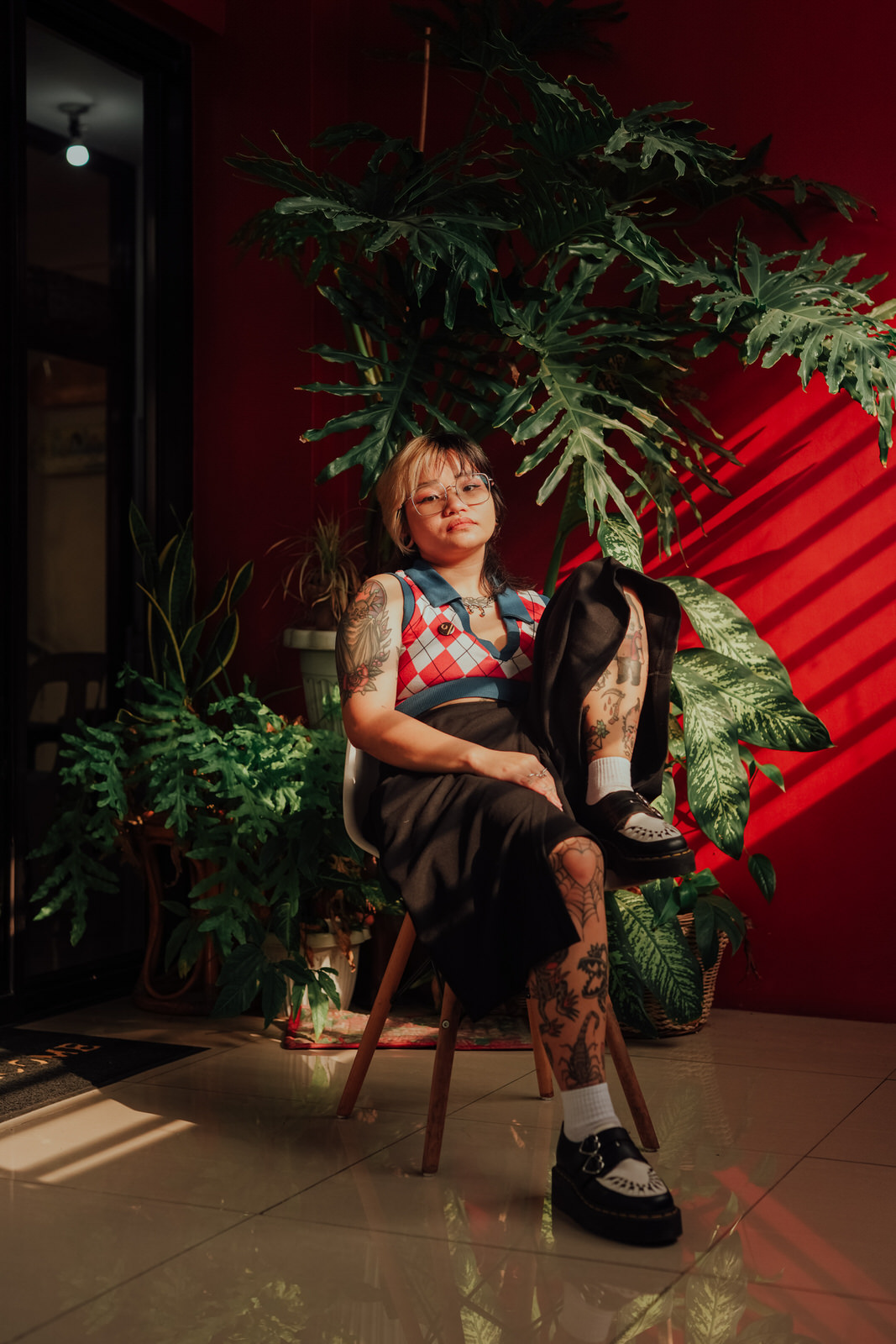
At the heart of tattooing in this tussle of grey as clients turn into friends, Gigie nods that tattoos will always be more than ink under skin. “I think a good tattoo artist or shop not only makes a beautiful mark on a person’s skin but on their hearts as well.” The artist is charged with the alchemic job of turning body to canvas and that is a reward in itself.
“The greatest joy is having to meet wonderful people and getting to share ideas and catching them smile after seeing their tattoo. It’s really rewarding and makes my heart really happy.”
SUPPORT PURVEYR
If you like this story and would love to read more like it, we hope you can support us for as low as ₱50. This will help us continue what we do and feature more Filipinos who create. You can subscribe to the fund or send us a tip.

